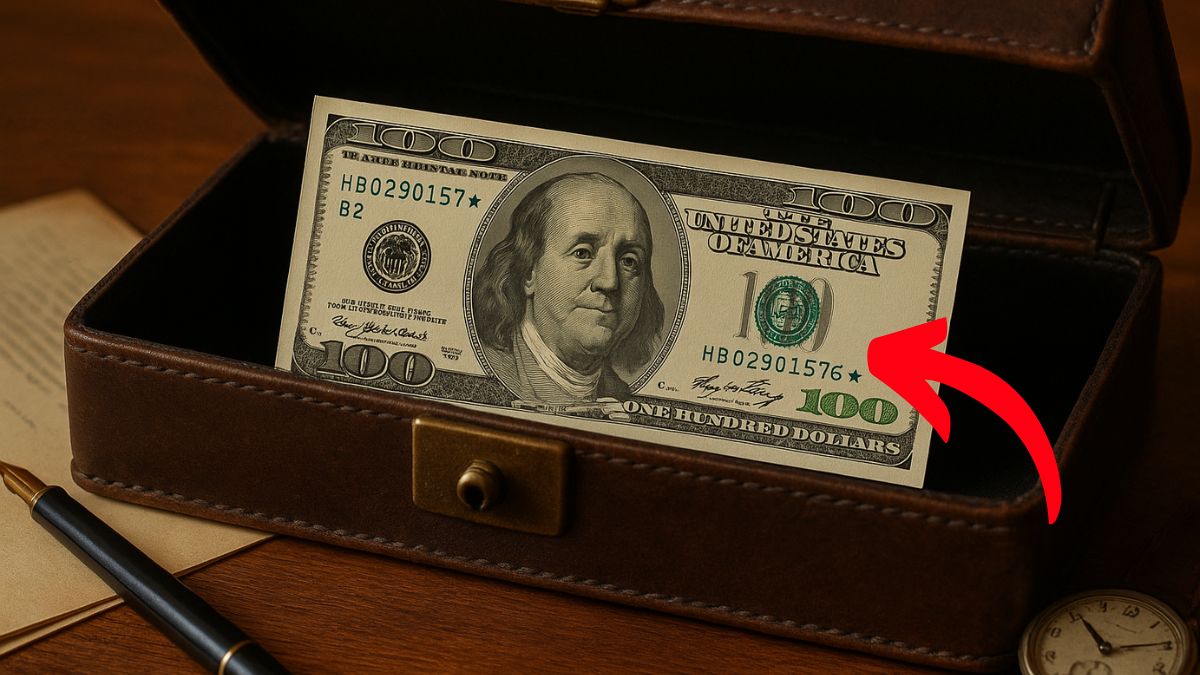In a surprising turn of events, a rare $100 star note has been unearthed from an old briefcase, sparking a fierce bidding war among collectors.
This unexpected discovery has captivated the numismatic community, highlighting the allure and value of these unique currency notes.
What Are Star Notes?
Star notes are replacement banknotes issued by the U.S. Bureau of Engraving and Printing (BEP) to replace misprinted or damaged notes.
Instead of reprinting the same serial number, the BEP adds a star symbol (*) at the end of the serial number to indicate its replacement status. These notes are produced in limited quantities, making them highly sought after by collectors.
The Discovery: A Hidden Treasure
The star note in question, a Series 2009A $100 bill, was discovered inside an old briefcase during a routine estate cleanout.
The note’s serial number, ending with a star, immediately caught the attention of the finder, who recognized its potential value.
Upon further inspection, it was confirmed to be a low print run star note, significantly increasing its rarity and desirability.
The Bidding War: Collectors Compete
Once the note’s rarity was established, it was listed for auction, attracting immediate interest from collectors worldwide.
The bidding quickly escalated, with offers surpassing the note’s face value multiple times over. The intense competition underscores the high demand for rare star notes and the lengths collectors will go to acquire them.
Factors Influencing the Note’s Value
Several key factors contribute to the value of a star note:
- Print Run Size: Star notes from smaller print runs are rarer and more valuable. Notes with print runs of 640,000 or fewer are particularly prized.
- Condition: Uncirculated or crisp notes fetch higher prices than those showing signs of wear.
- Serial Number: Unique or low serial numbers can add to a note’s appeal.
- Series and Year: Older series or those with limited circulation are more valuable.
Comparative Table: Star Note Values
| Series | Condition | Print Run Size | Estimated Value |
|---|---|---|---|
| 2009A | Uncirculated | 640,000 | $150 – $200 |
| 2013 | Circulated | 3.2 million | $100 – $130 |
| 2017A | Uncirculated | 320,000 | $175 – $225 |
| 1969C | Circulated | 192,000 | $125 – $175 |
Note: Values are approximate and can vary based on market demand.
Why Collectors Value Star Notes
Collectors are drawn to star notes for their rarity and the unique stories they tell. Each star note represents a replacement for an error, making them a tangible piece of the currency production process.
Their limited availability and distinctive markings make them standout pieces in any collection.
The discovery of this rare $100 star note serves as a reminder of the hidden treasures that can lie unnoticed in everyday items. For collectors, it highlights the importance of vigilance and knowledge in identifying valuable currency.
As the bidding war demonstrates, the allure of rare star notes continues to captivate and inspire the numismatic community.
FAQs
How can I identify a star note?
Look for a star symbol (*) at the end of the serial number on the bill. This indicates it’s a replacement note.
Are all star notes valuable?
Not necessarily. The value depends on factors like print run size, condition, and demand. Rare combinations of these factors increase value.
Where can I find information about my star note’s rarity?
Websites like MyCurrencyCollection.com offer tools to check the rarity and print run size of star notes.
Should I get my star note appraised?
If you believe your note is rare or in excellent condition, consulting a currency expert or appraiser can provide insight into its value.
